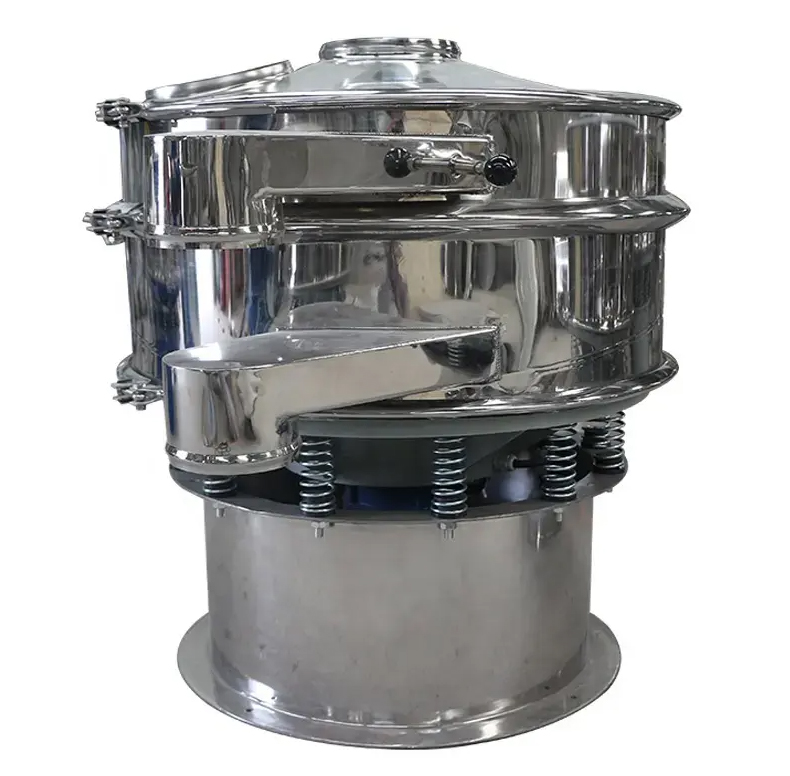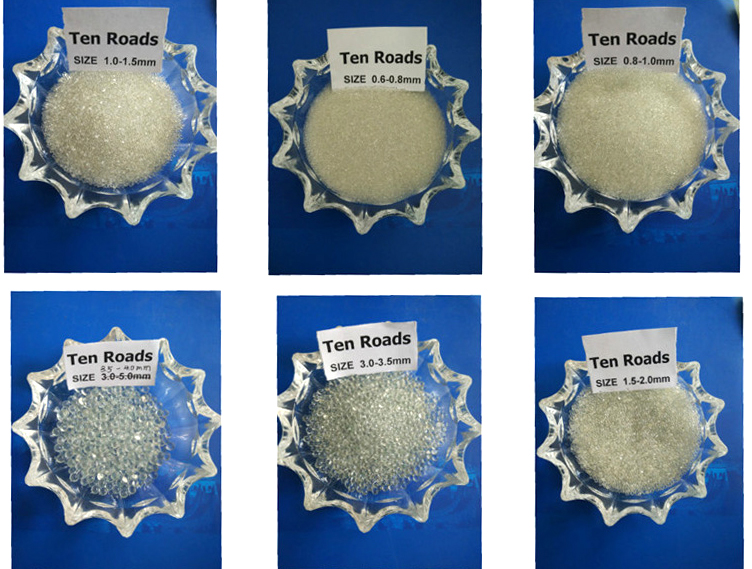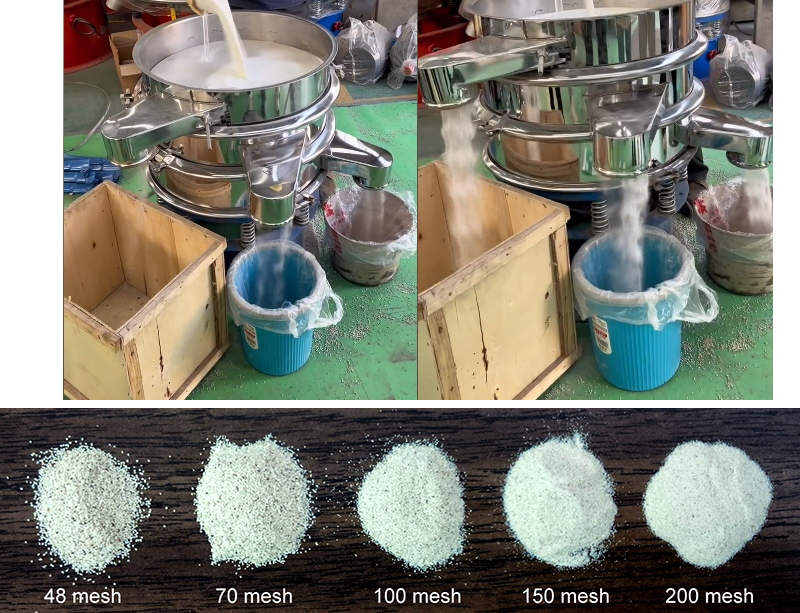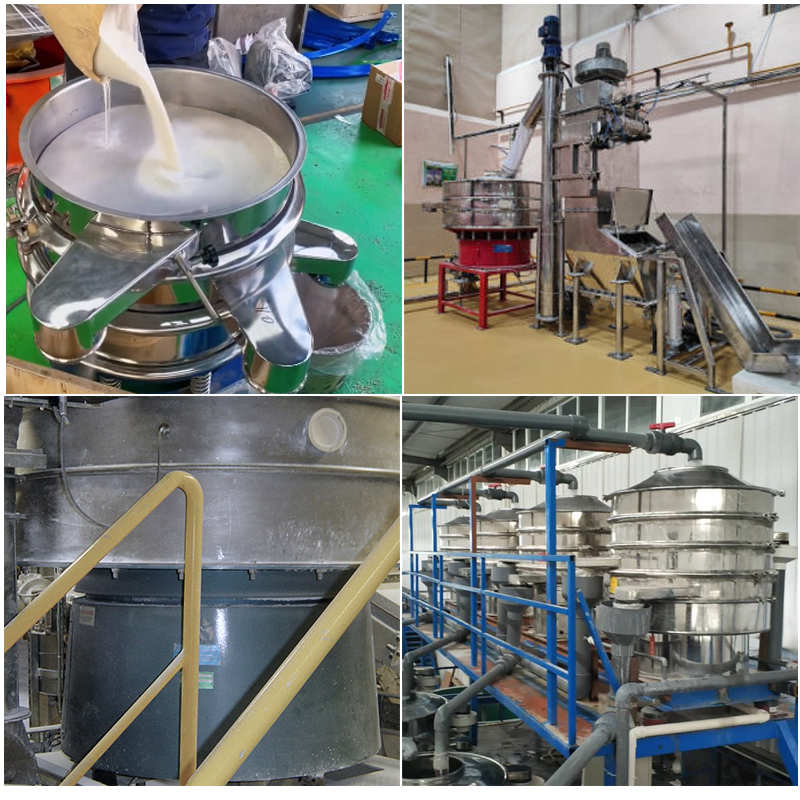Sieving machines can be used to grade glass grit, an abrasive material commonly used in sandblasting, surface preparation and other industrial applications. Glass grits are often made from recycled glass and can be sorted by size and shape to meet specific application requirements.


The purpose of glass grit grading is to ensure that the abrasive material is of consistent size and shape, which is important for consistent and effective results in sandblasting, surface preparation and other industrial applications.
Glass grit grading involves separating material into different size ranges, usually using a sieving machine that can be used against glass or other screening equipment. This helps ensure a uniform glass grit grain size, which is important for consistent results in blasting and surface preparation applications.
1. Different applications may require different sizes of glass grit. For example, larger grains can be used for rougher surface preparation, while smaller grains can be used for finer or precise work. By grading glass grits according to size, you can ensure that the material is suitable for a specific application and will perform as expected.
2. Grading glass grit can also help to remove any impurities or foreign matter that may be present in the material, such as dust, dirt or other pollutants. This is important to ensure that the final product is of high quality and free from defects or contamination that could affect its performance or appearance.
Overall, glass grit grading is an important quality control step in abrasive production. It helps ensure that material is dimensional and free of impurities, which can improve the efficiency and reliability of blasting and surface preparation applications.
Glass grit grading can present several challenges, including:
1. Dust control: the glass grit will generate dust during the grading process, which will endanger the health of workers and pollute the surrounding environment. Proper dust control measures, such as ventilation and dust collection systems, must be in place to ensure a safe and clean working environment.
2. Screen wear: The screens used in glass grit graders wear out over time, which affects the accuracy and consistency of the grading process. Regular maintenance and replacement of worn screens is necessary to ensure reliable and consistent results.
3. Screen Blindness: The glass grit can sometimes stick to the screen, causing a clog or "blindness" that reduces the efficiency of the grading process. Proper screen cleaning procedures and equipment must be used to prevent clogging and maintain consistent performance.
4. Variation in the composition of glass grit: The composition of glass grit can vary depending on the source and method of production. Changes in composition can affect the grading process and may require adjustments to grading equipment or processes.
5. Size range requirements: Different applications may require different size ranges of glass grits, and achieving this consistently can be challenging. Grading equipment must be properly calibrated and maintained to ensure that the glass grit is graded accurately and consistently in the desired size range.
Overall, the challenges of glass grit grading must be addressed through proper equipment selection, maintenance and operation, and appropriate safety and quality control measures to ensure a safe and efficient grading process.

The glass grit sieving machine is designed to separate and grade glass grit according to size, an important step in the production of abrasives. Some key features of the glass grit sieving machine include:
1. Improved Consistency and Accuracy: The glass grit sizing sieve is designed to accurately and consistently classify glass grit particles according to size. This helps ensure that the glass grit is uniform in size, which can improve the efficiency and effectiveness of sandblasting and other applications.
2. Customizable size specifications: glass grit grading sieves can be customized to meet specific size specifications and requirements. This enables greater flexibility and precision in fractionation and separation processes and helps optimize material performance in a variety of applications.
3. Reduce waste: Classifying screens separate glass grit particles according to size, helping to reduce waste and improve the overall efficiency of the manufacturing process. This helps reduce costs and increase profitability for manufacturers and other users of the material.
4. Improve product quality: Grading glass grit particles can help remove impurities and foreign matter, such as dust, dirt and other contaminants. This improves the overall quality of the final product and ensures it performs as intended in a variety of applications.
5. Improved safety: Using glass grit grading screens helps reduce the risk of injury or accidents during sandblasting or other applications. By ensuring that the glass grit particles are uniform in size, the risk of equipment damage or failure can be reduced, which can improve the safety of workers and other users of the material.

Overall, glass grit grading is an important quality control step in abrasive production. It helps ensure that material is dimensional and free of impurities, which can improve the efficiency and reliability of blasting and surface preparation applications.
Address:China,Yanjin county forest park gate to the west 1000 meters north road.